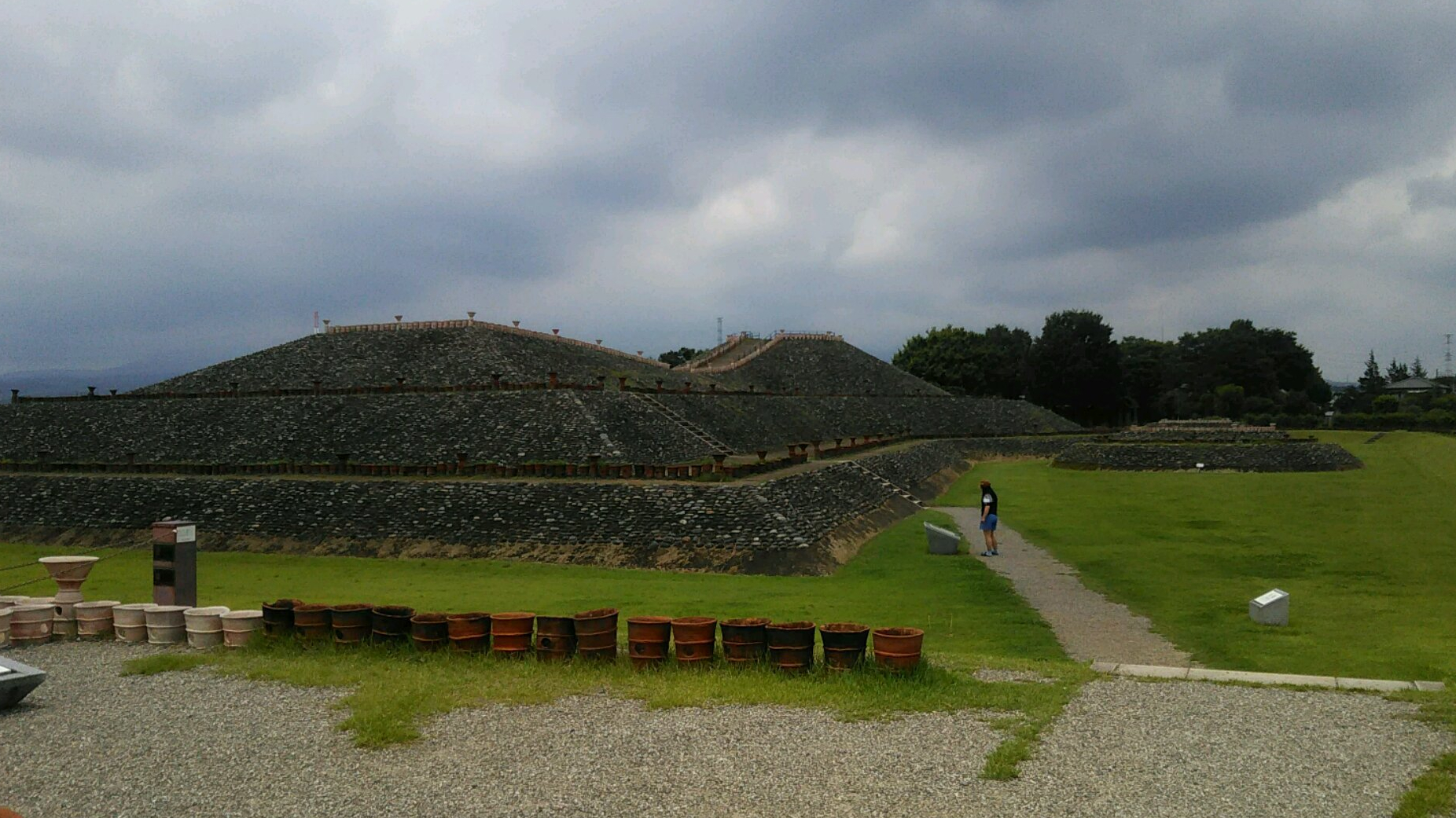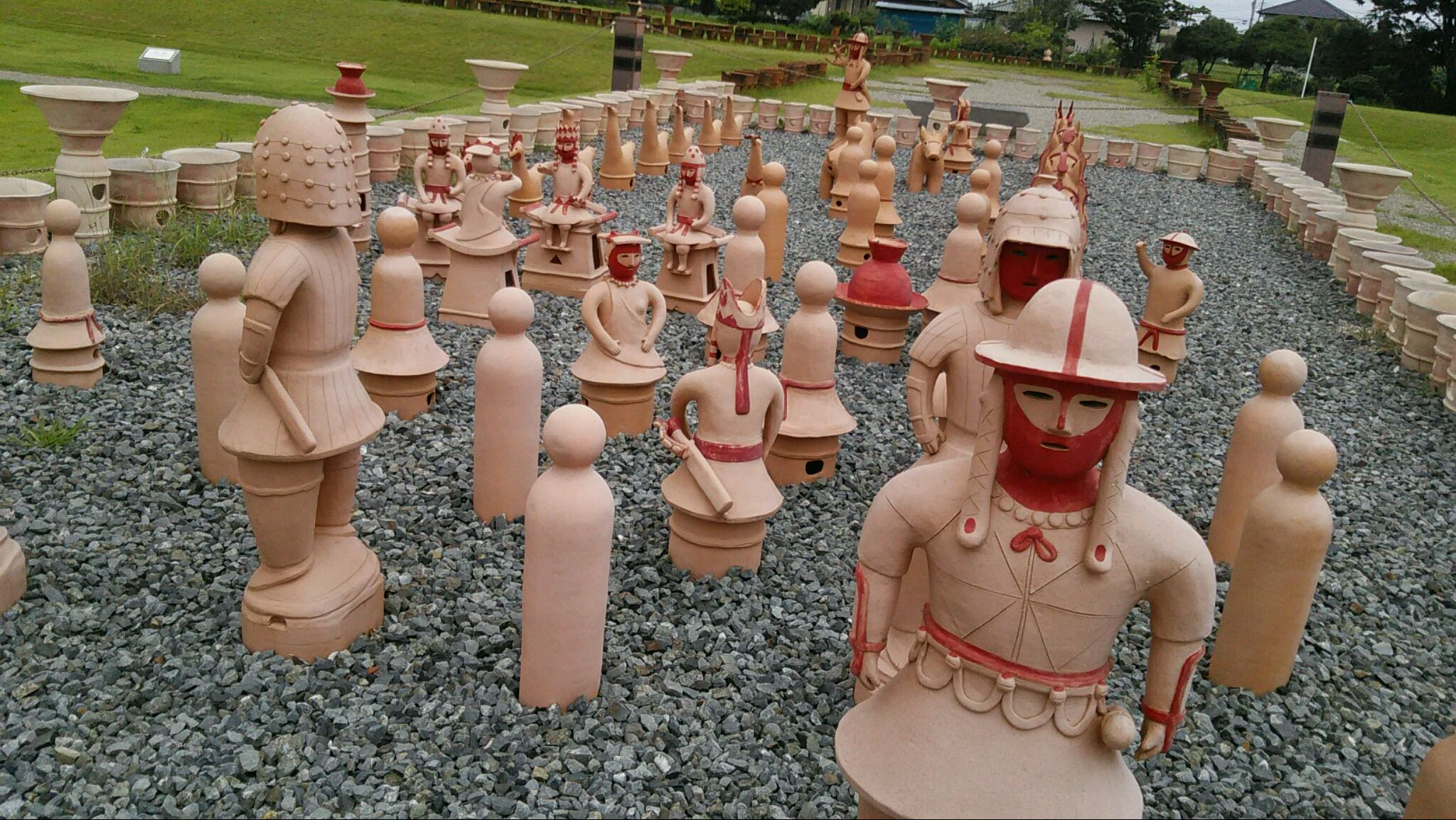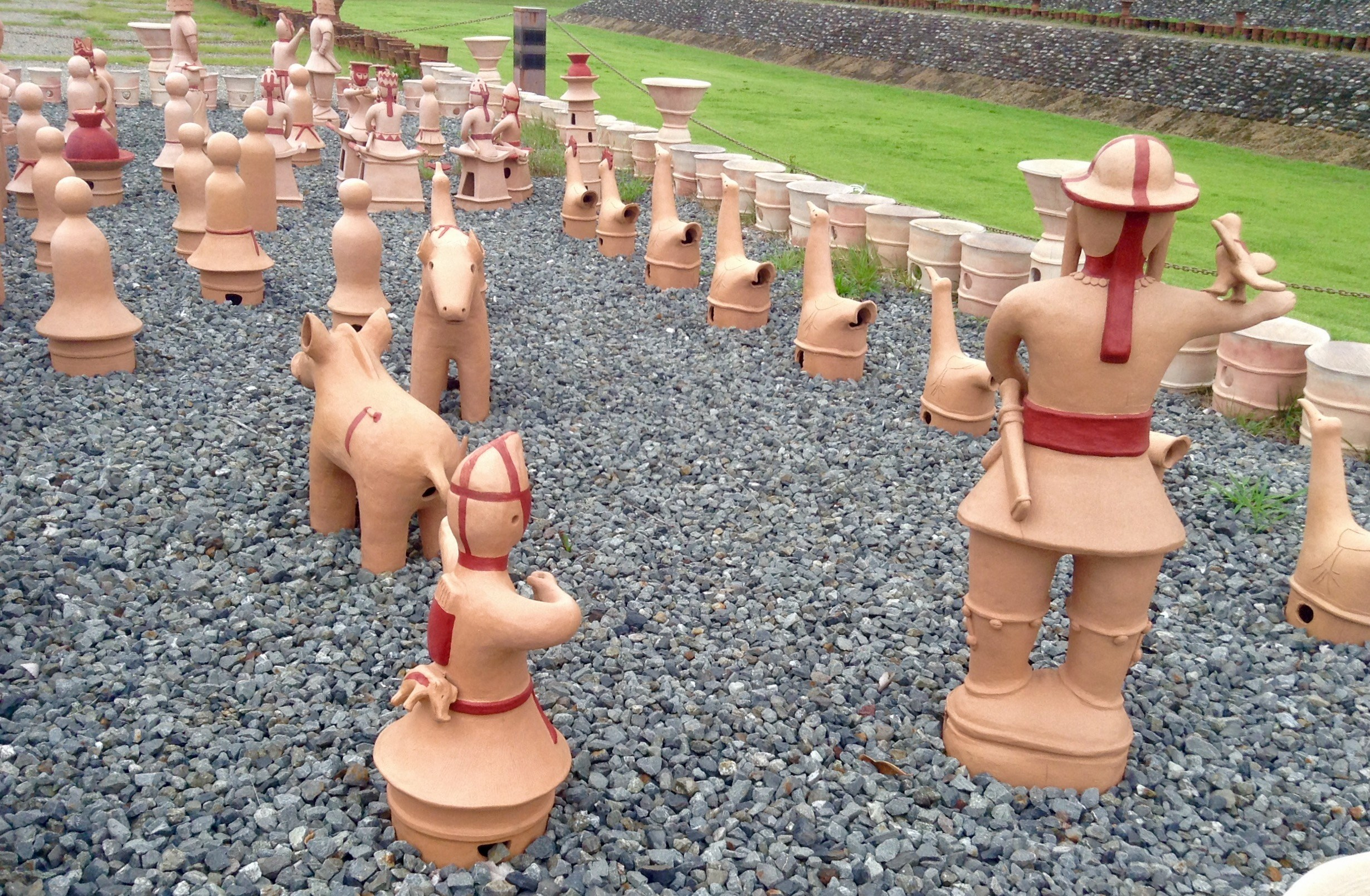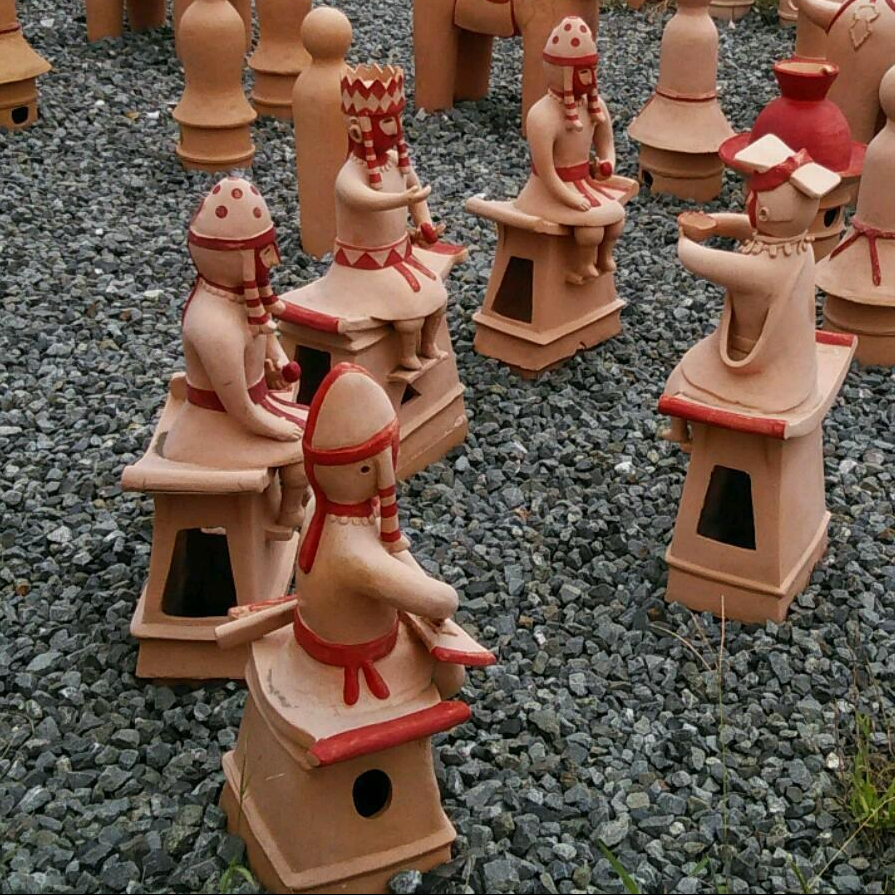Haunting haniwa images of horsemen, hunters and warrior kings from 1,500 years ago
Located in Takasaki city, a now sleepy off-the-beaten-path part of Gunma prefecture is an archaeological gem of a museum called Kamitsukeno-sato Museum of Archaeology (jp page). It is here that you can find some of the largest kurgan-style tumuli of the Kanto region (the other large Kanto example is the Sakitama kofun cluster).

Of particular interest is the lifestyle and society of regionally powerful chieftain kings depicted by the haniwa clay figurines that were interred south of the Hachimanzuka kofun mausoleum, as well as the remains of the residence of its ruler which were unearthed in good condition having been buried by the eruption of Mt. Haruna volcano.

If a picture paints a thousand words, what could these haniwa figurines tell us about the lives and times of the people who lived here (in the area that is now called Takasaki city) more than 1,500 years ago?
The scene below has a cluster of figurines of two hunters. The figure (bottom left) has strung his bow and is readying to shoot a wild boar that has been herded into position by a hunting dog. To the hunter’s right, is a member of nobility who is perhaps out training his fledgling falcon kite to hunt (in the tradition of the Eurasian nomads). So we have learned from this cluster of figurines that here is a society that likes to hunt for its favourite past time. All Asian falconers held their birds on their gloved right arm as depicted here.

Falconry is a traditional art in Japan that is dying out and can be seen today only at Nijo Castle or Himeji Castle, but is still practised among Eurasian nomads like the Kyrgrz falconers in the photo below (source The Lure of Falconry).

Kyrgrz falconers in the photo below (source The Lure of Falconry).
These haniwa also bring to life scenes of horsemen, a powerful warrior king, soldiers armed with swords and in warrior garb similar (far right is similar to that worn by Mongol terracotta soldiers)

Excavated from the clan chieftain king’s compound buried under Mt. Haruna’s ashes were remains of horses.

Above is a figurine of a groom walking with the horse. Horse figurines are a symbol of military might and power for kings across Eurasia to Japan at the time. These horse figurines resemble most those of Northern Wei and Korean Gaya state Northern Wei . A recreation of the king’s stables can be seen in the museum.
The haniwa figurines below show a king with a crown (unique to Japanese tumuli that resembles more a middle ages European crown than an East Asian one) in some sort of ceremony (or perhaps he is merely entertaining his guests).

There is among the haniwa, also a representation of an aristocratic female, possibly a queen who appears to offering up water (or sake, but the museum staff have said that based on their research of the water ditch features uncovered at the excavated residence nearby, it is likely to be a ceremonial water rite).
According to the museum staff, the haniwa are thought to be representative of the style of Korean Kaya (Gaya) group of states or a loose confederacy of 6 states terracotta figurines (compare duck pottery figurines and other examples at this page) as the people who settled this region, building large tumulis introduced this foreign burial culture are believed to have been from Kaya during this century.
Roughly contemporaneous with the Kofun culture, the people of Kaya states were known to have had close trading relations with Kofun Japan (known as Wa at the time) and there is evidence that they sacrificed humans as remains of bones of living attendants who were interred in the tumuli. For some unknown reason, while archaeologists have searched hard for evidence of human sacrifice, such remains have not turned up anywhere. Possibly, the immigrants arriving in Japan took the opportunity to ditch the practices, which suggests that either they were on fairly genial terms with the locals, and they did not want to jeopardize the good relations and that haniwa figurines performed adequate symbolic stand-ins for human and animal sacrifice and/or that Buddhist compassion eventually influenced burial practices.
Sources and references and further readings
On Ara Gaya’s Ham-An Marisan ancient royal tombs (Trip to Korea blog) “6 Gayas included Ara Gaya, Seongsan Gaya (Seongju), Geumgwan Gaya (Gimhae), So Gaya (Goseong), Dae Gaya (Goryeong), Bihwa Gaya (Changnyeong). Araya gaya was an influential empire leading the exchange with Japan”
Duck-shaped pottery from 5th or 6th century Kaya Wikipedia
Gaya tumuli of Gimhae and Haman (UNESCO article)
Heavenly horses and horse figurine art traditions of Eurasia Japanesemythology wordpress.com webpage
Khitan falconers before the hunt
Mongols, Turks and others by Reuban Amitai and Michal Biran |Try out Eagle hunter workshops or experience Mongolian culture here.
The people of Gaya sacrificed humans
The Golden Eagle Hunters of Kyrgyzstan | Watch falconry video here

